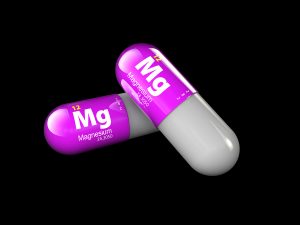.Eli Lilly’s promising drug solanezumab failed; so, what works against Alzheimer’s? This drug was supposed to dissolve the amyloid deposits that function like glue and make the patients lose their memory. This phase 3 trial was to test the drug on patients to assess efficacy, effectiveness and safety. But instead it showed that the new drug did not stop the loss of memory.
Brain bleeding as a side effect of potential Alzheimer’s drug
Now all those who were hoping for solanezumab to be effective, will jump on another drug, aducanumab. Biogen from Cambridge, Massachusetts, has developed this drug. Out of 165 subjects only 125 completed preliminary studies. 40 patients who discontinued it, had negative side effects. These included fluid building up in the brain, which was thought to be due to removal of the plaques. But others, had brain bleeding.
Although the drug manufacturer is still hoping that aducanumab will work out as an anti-Alzheimer’s drug, I have my doubts. A drug that can have potential brain bleeding as a side effect does in my opinion not qualify as an anti-Alzheimer’s drug.
Factors that help prevent Alzheimer’s
1. Diet can be as effective as a drug in treating Alzheimer’s
In September 2015 researchers from Rush University published results of putting Alzheimer’s patients on the MIND diet. The MIND diet was a prospective study where 923 people aged 58 to 98 years participated. Researchers followed these people for 4.5 years. Three groups of diets were tested: Mediterranean diet, DASH diet and MIND diet.
The MIND diet study result
The adherence to the diet was measured: those who followed the diet very closely, other participants who were less diligent, and finally those who were not compliant with the diet. With regard to the MIND diet the group with the highest adherence to the diet reduced the rate of Alzheimer’s by 53% compared to the lowest third. This is like a highly effective Alzheimer’s drug! The second group still was able to reduce the rate of Alzheimer’s by 35%, which would be like a regular strength drug. The control diets were the DASH diet and the Mediterranean diet. The group that was strictly adhering to the DASH diet reduced Alzheimer’s by 39%, the group that was very conscientious in adhering to the Mediterranean diet reduced Alzheimer’s by 54%. The middle thirds of both control diets did not show any difference versus the lower thirds.
Findings of Alzheimer prevention by diet
The conclusion was that a strict Mediterranean diet had a very good Alzheimer prevention effect, as did a strict MIND diet. However, when patients did not adhere too well to a diet, the MIND diet was superior still yielding 35% of Alzheimer’s prevention after 4.5 years. The other diets, when not adhered to that well, showed no difference from being on a regular North American diet. Here is more info about the MIND diet.
Conclusion
Avoid the Standard American Diet. Adopt a Mediterranean diet and stick to it in a strict fashion or adopt the MIND diet. The other benefit is that there are no side effects!
2. Stress and Alzheimer’s
A 2010 study from Gothenburg University, Sweden examined 1462 women aged 38-60 and followed them for 35 years.
Psychological stress ratings went back to 1968,1974 and 1980. 161 females developed dementia (105 of them Alzheimer’s disease, 40 vascular dementia and 16 other forms of dementia). The risk of dementia was higher in those women who had frequent/constant stress in the past. The condition became more severe the more stress they had to face in the past. Women with exposure to stress on one, two or three examinations had higher dementia rates later in life in comparison to women who had no exposure to any significant stress. Specifically, dementia rates were 10% higher after exposure to one stressful episode, 73% higher after two stressful episodes and 151% higher after exposure to three stressful episodes.
Conclusion
Prevention of Alzheimer’s is possible by avoiding stress and seeking counselling when stress occurred .
3. Be creative, prevent Alzheimer’s and dementia
In an April 8, 2015 publication from the Mayo Clinic in Rochester, MN and Scottsdale, AZ 256 participants aged 85 years and older (median age 87.3 years, 62% women and 38% men) were followed for 4.1 years. Psychological tests measured mild cognitive impairment (MCI). At the time of recruitment into the study all of the tests for MCI were normal. As the study progressed it became apparent that there were various risk factors that caused the onset of MCI, which is the immediate precursor of dementia/Alzheimer’s disease.
The finding was that the presence of the genetic marker APOE ε4 allele carried a risk of 1.89-fold to develop MCI and later Alzheimer’s disease.
Further findings of the study
When patient showed signs of depression at the time of enrolment into the study, the risk of MCI development was 1.78-fold. Midlife onset of high blood pressure led to a 2.43-fold increase and a history of vascular disease showed a relationship of 1.13-fold higher MCI development. The good news was that four activities correlated with a lower risk of developing MCI with aging. When the person engaged in artistic activities in midlife or later in life the risk for MCI development 73% lower, involvement in crafts reduced it by 45% and engagement in social activities by 55%. In a surprise finding the use of a computer late in life reduced MCI development by 53%. These are very significant observations. This would be equivalent to highly effective anti-Alzheimer’s drugs.
Conclusion
If you stimulate your mind in older age, even browsing on the computer, this will help you to prevent Alzheimer’s disease.
4. Lifestyle factors contributing to Alzheimer’s
a) Sugar consumption: Sugar consumption and too much starchy food like pasta (which gets metabolized within 30 minutes into sugar) causes oxidization of LDL cholesterol and plaque formation of all the blood vessels including the ones going to the brain. On the long-term this causes memory loss due to a lack of nutrients and oxygen flowing into the brain.
b) Lack of exercise: Lack of exercise is an independent risk factor for the development of Alzheimer’s disease. Exercise increases the blood supply of the brain, strengthens neural connections and leads to growth of neurons, the basic building blocks of the brain. Exercise increases mood-regulating neurotransmitters like serotonin and endorphins.
c) Sleep deprivation leads to memory loss, but so does the use of aspartame, the artificial sweetener of diet sodas. Make your own homemade lemonade. Squeeze the juice of half a lemon. Add mineral water to fill an 8 oz. glass. Add a tiny bit of stevia extract for sweetening. Stir and enjoy. Stevia has been in use for thousands of years.
5. Hormone changes
A lack of testosterone in men and estrogen in women interferes with cognition and memory. For this reason it is important after menopause and andropause (=the male menopause) to replace what is missing with the help of a knowledgeable health professional.
Progesterone is manufactured inside the brain, spinal cord and nerves from its precursor, pregnenolone, but in women it also comes from the ovaries until the point of menopause. The myelin sheaths of nerves requires progesterone and progesterone also has a neuroprotective function. In menopausal women bioidentical progesterone is a part of Alzheimer’s prevention.
Melatonin is a hormone, a powerful antioxidant and a neurotransmitter at the same time. It helps in the initiation of sleep, stimulates the immune system and protects from the toxic effects of cobalt. Lab tests in Alzheimer’s patients found elevated values. In an aging person it is wise to use melatonin at bedtime as a sleep aid and to preserve your brain.
6. Genetic risk of Alzheimer’s
At the 22nd Annual A4M Las Vegas Conference in mid December 2014 Dr. Pamela Smith gave a presentation entitled ”How To Maintain Memory At Any Age”. She pointed out that there are about 5 genes that have been detected that are associated with Alzheimer’s disease and in addition the apolipoprotein E4 (APOE4). About 30% of people carry this gene, yet only about 10% get Alzheimer’s disease, which shows how important lifestyle factors are (in medical circles physicians call this the “epigenetic factors”) to suppress the effect of the APOE4 gene. She also stated that our genes contribute only about 20% to the overall risk of developing Alzheimer’s disease. This leaves us with 80% of Alzheimer’s cases where we can use the brain nutrients and hormones discussed above and exercise to improve brain function.
7. Vitamin D3 protects your brain from Alzheimer’s disease
Alzheimer’s disease is a neurodegenerative disease of old age. We know that it is much more common in patients with type 2 diabetes where insulin levels are high. Studies have shown that Alzheimer’s disease can be termed type 3 diabetes.
The resulting neurofibrillary tangles and amyloid-beta deposits damage nerve cells, which are responsible for the memory loss and the profound personality changes in these patients.
What does vitamin D3 have to do with this?
A 2014 study showed that a low vitamin D level was associated with a high risk of dementia and Alzheimer’s disease.
Specifically, the findings were as follows.
- Vitamin D level of less than 10 ng/ml: 122% increased risk of Alzheimer’s
- Vitamin D level 10 to 20 ng/ml: 51% increased risk of Alzheimer’s
The same research group found in two trials that vitamin D deficiency leads to visual memory decline, but not to verbal memory decline.
Generally supplements of vitamin D3 of 5000 IU to 8000 IU are the norm now. But some patients are poor absorbers and they may require 15,000 IU per day. The physician can easily determine what the patient needs in the dosage of vitamin D3 by doing repeat vitamin D blood levels (as 25-hydroxy vitamin D levels). The goal is to reach a level of 50-80 ng/ml. The optimal level with regard to nmol/L is 80 to 200 (according to Rocky Mountain Analytical, Calgary, AB, Canada).
8. Avoid sugar overload
We already mentioned sugar consumption under point 4. But here I am mentioning it again because of the insulin reaction. An overload of refined carbs leads to an overstimulation of the pancreas pouring out insulin. Too much insulin (hyperinsulinemia) causes hormonal disbalance and leads to diabetes type 3, the more modern name for Alzheimer’s. All starch is broken down by amylase into sugar, which means that anybody who consumes starchy food gets a sugar rush as well. Too much sugar in the blood oxidizes LDL cholesterol, which leads to inflammation in the body. The consequence of chronic inflammation are the following conditions: hardening of the arteries, strokes, heart attacks, Alzheimer’s due to brain atrophy, arthritis, Parkinson’s disease and cancer.
Conclusion
In the beginning we learnt about a failed phase 3 trial regarding an anti-Alzheimer’s drug. Next we reviewed several factors that can all lead to Alzheimer’s and that have been researched for many years. It would be foolish to think that we could just swallow a pill and overlook the real causes of Alzheimer’s disease. I believe there will never be a successful pill that can solve the increasing Alzheimer’s problem. It is time that we face the causes of Alzheimer’s. This means cutting down sugar to normalize your insulin levels.
Lifestyle changes necessary to avoid Alzheimer’s
We need to supplement with vitamin D3 because we know that it helps. For women in menopause or men in andropause it is time to replace the missing hormones with bioidentical ones. We need to handle stress and avoid sleep deprivation. And, yes we need to exercise regularly. Following a sensible diet like the Mediterranean diet or the MIND diet makes sense. And let us keep our minds stimulated. Chances are, when we do all of this that we will not need any Alzheimer’s pill. This is not good news for the drug companies, but will be very good news for you. Last but not least, there are no side effects, only health benefits!
Additional resource on how to preserve your memory.















